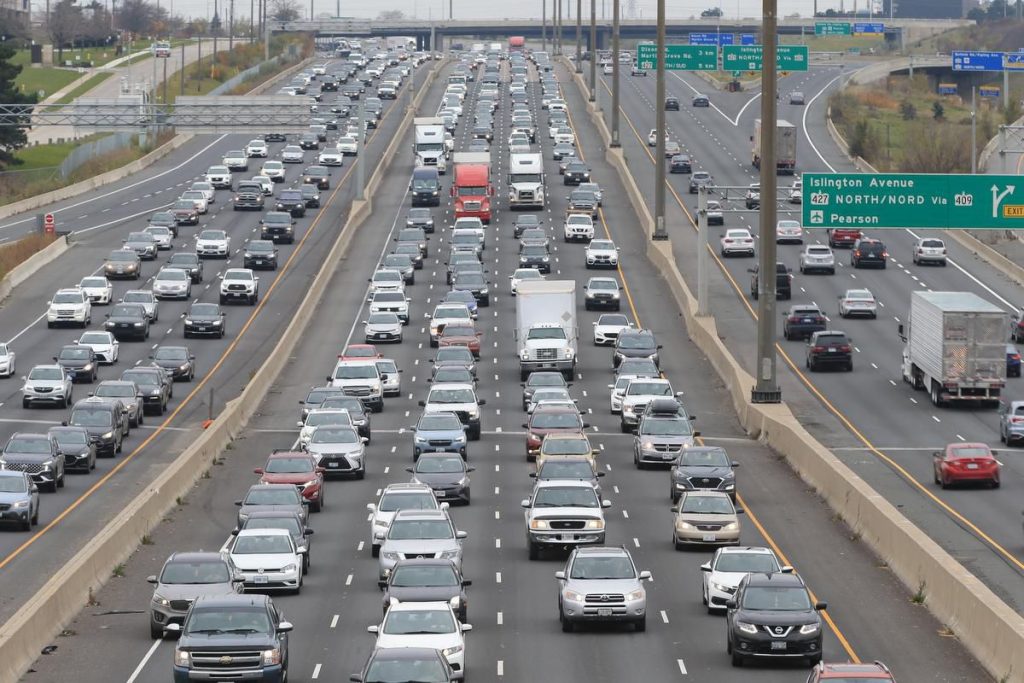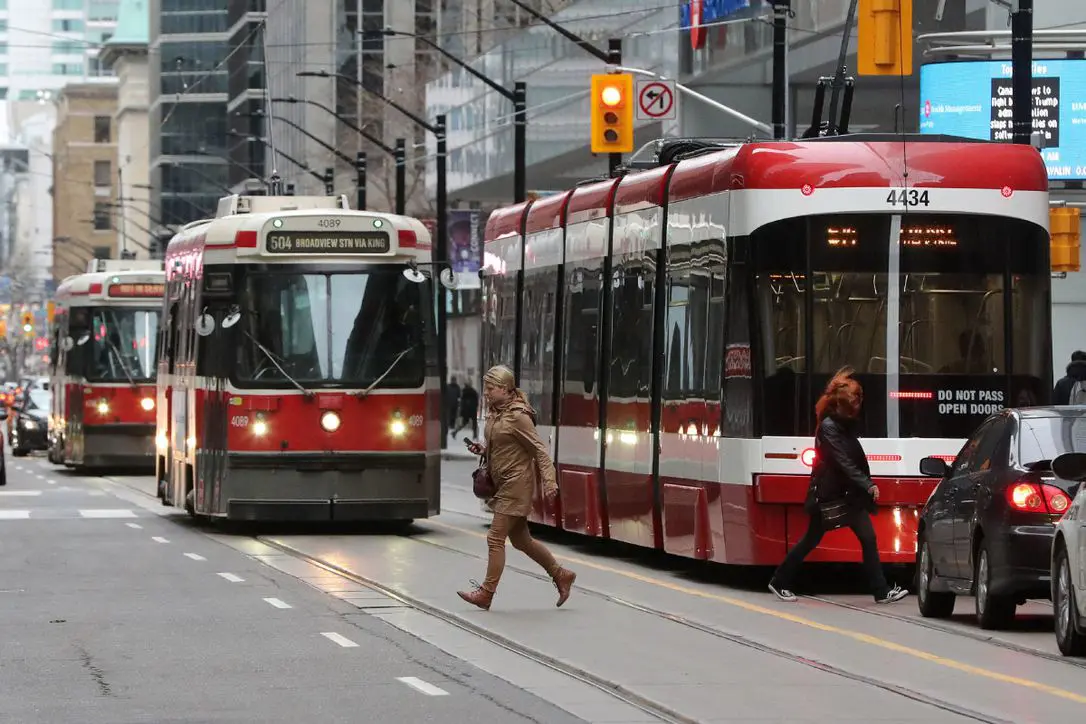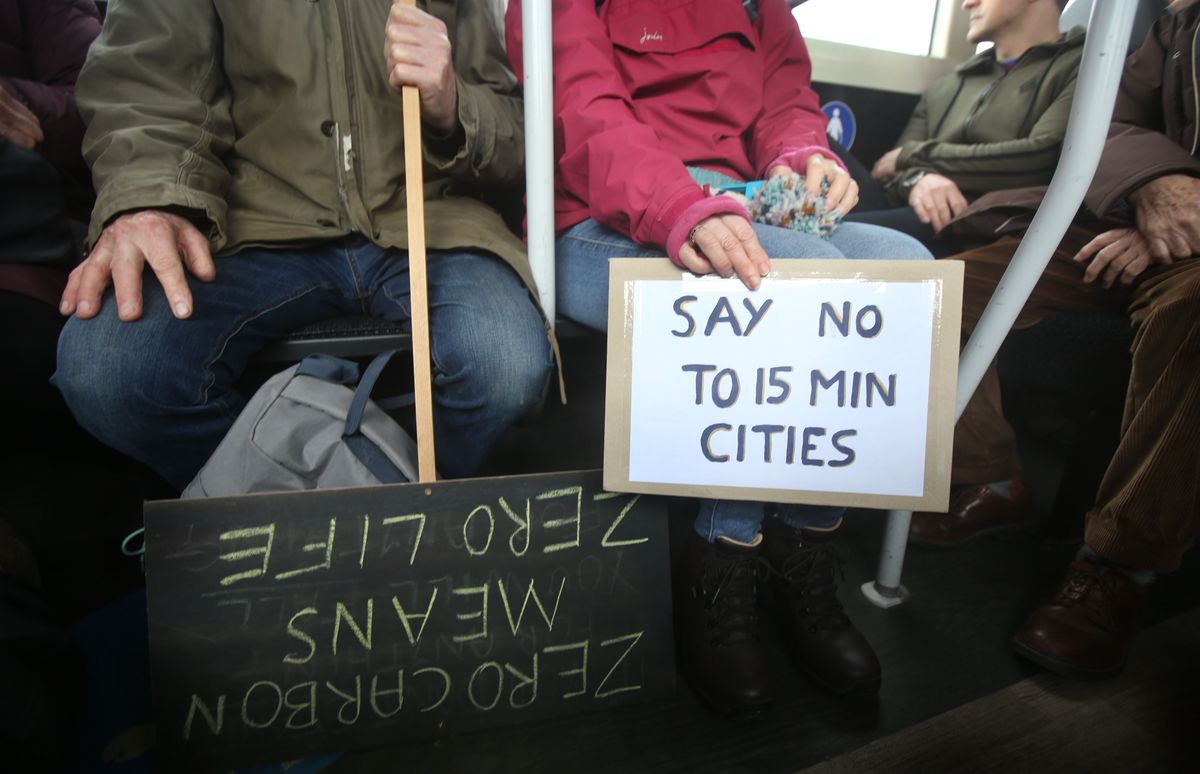Transportation Equity? Not without understanding the politics of decision making
The recent controversy over 15-minute cities suggests that tackling the politics of transportation is key for reaching equity. In this post, Waterloo University PhD candidate Samantha Leger discusses the politics of transportation.
Starting in February, 2023, Canada experienced the first of the protests opposing 15-minute cities. Now in the months that have followed, the discourse of 15-minute cities has risen in prominence as the intent and implications of the once widely-praised initiative face scrutiny. The term ‘15- minute city’ initially gained popularity in 2020 when the Mayor of Paris promised all residents would have access to essential amenities (schools, employment, groceries, essential retail, parks) within 15 minutes of their home (Sustainable Urban Delt, 2022).
In many ways, 15-minute cities are a continuation of the longstanding walkable city concept that prioritizes accessibility, safety, and comfort of pedestrians. These types of neighbourhoods are noted as healthier, more sustainable, and more equitable by getting residents out of their cars to walk or cycle and ensuring alternatives are available to those without access to a car. Over the last few months, a niche group of critics have declared the concept of 15-minute cities a government conspiracy designed to limit individual freedoms and mobility by forcing people into “districts” and restricting private car ownership (Anderssen, 2023). These two divergent perspectives on 15-minute cities demonstrates just how polarized our society has become and that transportation issues are not immune.
Although it may seem simpler, or even more logical, to ignore or disregard the sensationalist claims of the dangers of walkable cities–to do so would be irresponsible. In the Canadian transportation decision-making world, the voice of the public weighs heavy. An approach that outright disregards the mindset of the loud minority can quickly find that mindset growing among the masses. Already, news media is touting the need for caution: opinion-articles are openly denouncing 15-minute city conspiracy theories but in the same breath warn of a future that leans too far in an ‘anti-car’ direction (see Jesse Klien for the National Post or Jen Gurson for the Globe and Mail).
Evidently, there is a need for us to understand the underlying assumptions that shape our perceptions of transportation modes. The recent protests speak to more than just a misinformation crisis, they also illuminate the deeply entrenched meanings we place on the car and, in contrast, sustainable transportation modes. There are politics embedded into transportation decision-making that informs our mode-choices. Understanding these politics allows us to further understand what is at stake, and what we can do to shape a mobility future that decenters power and fear, and recenters equity and justice.
The politics of driving?
Our preoccupation with the image of the automobile is undeniable. It is evident through the design of homes with large 2-car garages, the design of cities with vast and ample parking at every turn, and of course the sprawling suburban environments where driving is the default, and often only reliable, mode of travel. These changes also informed our everyday habits, raising a generation that–for those who had the means–knew no other means of transportation than getting in their car and driving.
Yet, more than just habits, the dominance of the car in Canadian society also brought with it certain expectations and meanings. The car is for many a form of independence and freedom from the moment they attain their license. For others the car also represents stability and is a core symbol of suburban family life. Further, through its embeddedness in ongoing production and consumption, the car also represents opportunity and booming economy, with influence on expansive infrastructure, gas and oil industries, and of course, auto manufacturing. Unpacking these meanings is essential in understanding the ways sustainable transportation initiatives are then perceived. If the car is somehow uncritically emblematic of freedom and stability, the future where one doesn’t drive is ominous.

In more recent years, these promises of freedom and stability touted by the car have been disproven through heavy congestion and continually rising costs for operation and maintenance. Clearly, our loyalty to cars goes beyond rational or technical decision-making. Cars may crawl through traffic and have significant costs associated, but for many this does not change their attachment. A feeling that is further justified when considering that for many Canadian communities, the car was, and often remains, the only option for reliable independent mobility as transit, cycling, and improvements to the pedestrian environment have been largely stunted by car-centric decision making in Canada.
The politics of walking and cycling?
Now in the 21st century, it is widely acknowledged that our car-centricity has been a major contributor to the climate crisis and rise of chronic diseases. These serious consequences have spurred an advocacy movement calling for more sustainable transportation solutions such as the addition of more bike and bus lanes and improved planning paradigms that promote density and mixed-use neighbourhoods facilitating walking, cycling, and transit trips. These sustainable transportation initiatives and investments are often pitched as the key to achieving a healthy, sustainable, vibrant, and economically successful city for all.

Yet, these initiatives and their ability to realize the lofty goals set, have recently been called into question. Specifically, walkability, bikeability and rapid-transit initiatives have been associated with gentrification, increased social control and surveillance on streets and public space, and catering to the already privileged (Zavestocki & Agyeman, 2014). In part, the logic behind these goals and critiques are reminiscent of the golden age of the automobile. If the car was a powerhouse of economic productivity, any initiative that follows must also prove its financial benefit.
Moreover, in the current Canadian political landscape, those who are empowered to advocate for sustainable modes of travel typically embody privilege and often have a range of transportation choices. This contributes to a worrying trend in which sustainable transportation initiatives become entrenched in privilege and power as opposed to a truly just and equitable transportation future.
What these politics mean for transportation decision making, and transportation equity
Simply put, how people feel about their preferred transportation mode did not materialize out of thin air. The emotions and fears that arose from the 15-minute city discourse are in part outcomes of past transportation decision-making that has prioritized car-centric lifestyles for over 50-years. In disregarding these attachments to the car, we risk a communication breakdown that further polarizes the population wherein car-drivers are on one side, and sustainable transportation advocates on the other. However, this polarization is not only an outcome of how the car has been represented. Sustainable transportation has also become entrenched in its own politics wherein neighbourhoods and communities that represent sustainable transportation values tend to cater to a certain type of public, which is also embedded in its own forms of power and privilege. It is suffice to say that moving towards equity needs careful analysis into why, how, by whom, and for whom transportation-decision making takes place. Particularly, in a transportation-decision making model that is based in elected-officials that speak for the public, understanding these politics is imperative as there is power in the public sentiment.
To better understand the practical implications of politics in transportation, Theme 3: Equitable Community Planning and Engagement engaged elected officials across Canada to understand their perceptions of transportation equity and transportation decision-making. While the survey (n=165) and interview data (n=38) are still being analysed, emerging themes suggest that councillors and mayors can feel limited in advocating for transportation equity as they need to represent what and whom they hear from most. Often times, this does not represent those who are equity-deserving, but rather represents those who have the power, privilege, and means to participate in local municipal politics or access to alternate platforms to share their message. Further, elected officials have cited public communication as a barrier to advancing sustainable transportation initiatives. Again, the means in which emerging transportation initiatives are framed and discussed is vitally important to their acceptance and understanding by the public. An issue that has been noted by elected-officials to only be increasing due to rising distrust both between constituents, and towards local-government decision-making.
To end, effectively managing transportation-decision making is contingent on understanding the underlying politics driving different transportation modes in Canadian society. Equity does not exist outside of politics, and in the transportation-realm, that means that transportation equity is dependent upon understanding who chooses which transportation mode and why as a precursor to mobilizing just transportation futures.
Theme 3 will continue to explore these themes of communication, politics in transportation and the impact on achieving transportation equity, and mobility justice. Watch this space and look for more on our research as part of the Mobilizing Justice project.
References
Anderssen, E. (2023). Edmonton is the latest ‘15-minute city’ to be caught in a global conspiracy theory. The Globe and Mail. Retrieved from: https://www.theglobeandmail.com/canada/article-edmonton-15-minute-city-protests/
Zavestoski, S., & Agyeman, J. (Eds.). (2014). Incomplete streets: Processes, practices, and possibilities. Routledge.
Sustainable Urban Delta (2022). The “15-minute city”: how Paris is turning density and lack of space into a strength. Sustainable Urban Delta. Retrieved from: https://sustainableurbandelta.com/15-minute-city-paris-urban-farms/
You may also like
 The Different Price Tags of Access: Transit, Housing Affordability and Demographics
The Different Price Tags of Access: Transit, Housing Affordability and Demographics
Introduction Building a new transit system? Great for commuters. Even better for housing prices. When cities build transit, nearby land and housing prices often shoot… Read More
 Developing Standards for Equity in Transportation Planning and Policy
Developing Standards for Equity in Transportation Planning and Policy
program at McMaster University. I began my PhD in September 2023 and have been part of the PhD MJ Researchers team since then. In a… Read More
 Making Space for Grief: Innovate Approaches to Knowledge Mobilization Through Art, Placemaking, and Cross-Sector Dialogue
Making Space for Grief: Innovate Approaches to Knowledge Mobilization Through Art, Placemaking, and Cross-Sector Dialogue
Grief—often defined as the process of coping with loss—ebbs and flows throughout our lives. Despite its universality, this deeply human experience is often constrained by… Read More
